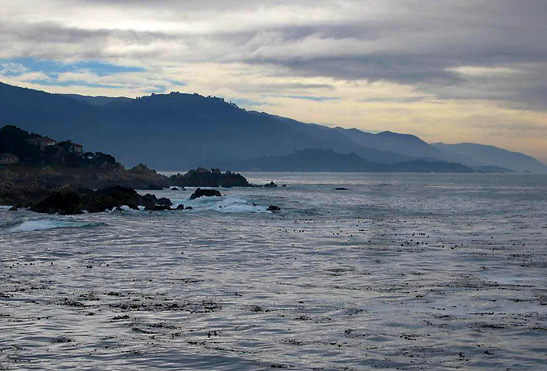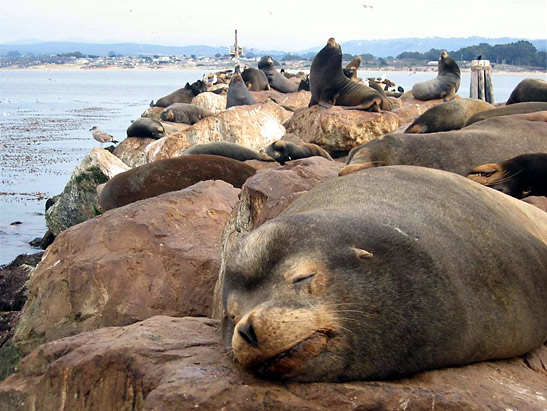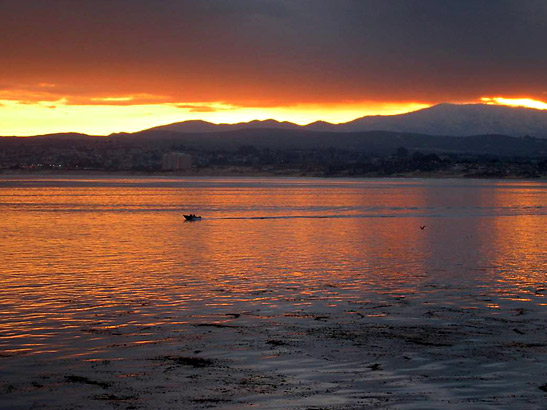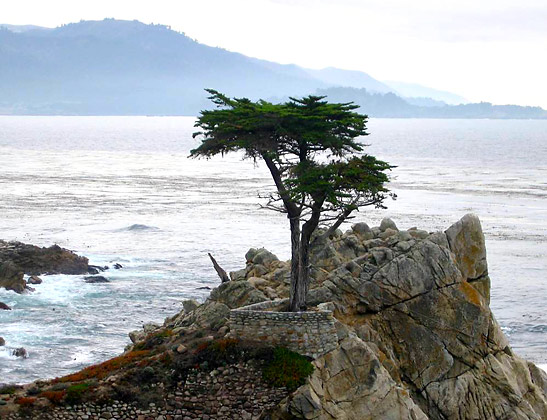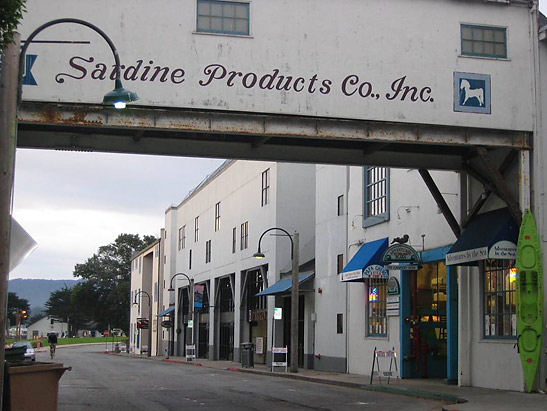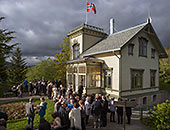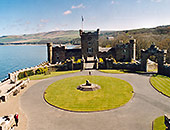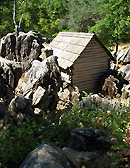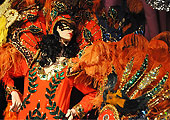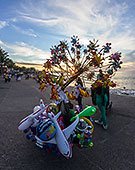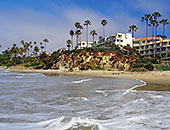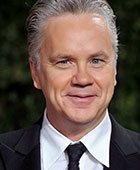 |
 |
|
 |

|
Travel and Adventure:
California’s Bountiful Monterey Bay Photos and Story by John Blanchette
“Cannery Row…is a poem, a stink…
The cacophony is now supplied by the roar of the sea when the tide runs in, gulls screaming over the water, unmannerly sea lions barking, continuously and at all hours, their sound carrying for miles in the damp salt breezes, and the kelp beds at low tide provide the proper stink to Steinbeck’s seaside memory. The bones of history can still be found in the environs of Monterey Bay, this much visited, sophisticated and stunningly beautiful part of California.
Located south of Santa Cruz, the Bay curves into the land for about 55 miles, running through the towns of Moss Landing, where most of the commercial fishing fleets dock, past Castroville, the artichoke heart of America, down to Monterey, Pacific Grove, the golf paradise of Pebble Beach and ends at lovely Carmel and Big Sur, home to other writers like Henry Miller, Upton Sinclair and Robinson Jeffers and photographers Ansel Adams and Edward Weston (whose works are on display at the Monterey Museum of Art).
Monterey was the Capital of California under Mexican and Spanish rule, moving to Sacramento in the late 1800s after “Manifest Destiny” claimed the west from them and the American Indians. Nature is abundant and wealthy here on both land and sea. The Monterey Bay Aquarium has captured the bounty of the local waters in its exhibits, from sea otters and jellyfish to giant ocean sunfish, a variety of menacing sharks, crustaceans and nervous schools of food and baitfish. Monterey Bay forms the west coast of the fertile Salinas Valley, America’s salad bowl whose rich farm lands played a major figure in native son Steinbeck’s works, this Eden to the West is now producing a new crop that is bringing world attention to the area, not ”The Grapes of Wrath” but of wine. I was in Monterey during the Annual Great Wine Escape Weekend held at the Quail Lodge, and can personally testify to the quality and variety of wines now produced in the hills and mountain valleys of Monterey County. I tasted wines from the 85 vineyards in the area. Besides Monterey, eight other official wine appellations are now recognized, including San Bernabe, Santa Lucia highlands (my favorite. You can’t find a bad bottle from this area), Chalone, Arroyo Seco, Carmel Valley, Hames Valley, San Antonio Valley and San Lucas. Some of the larger and better-known vineyards are J. Lohr, Estancia, Chalone and Caymus. The amazing find was that there are so many consistently fine wines being grown throughout the county, from the Santa Cruz boarder on the North to Paso Robles and the Central Coast to the south. Pinot Noirs do exceptionally well, but the wide range of geography, climate and soils accommodates all the major grape varietals. On arrival I took a sunset tour of a private street called 17-Mile Drive, which meanders through the magnificent coast, homes and golf courses of Pebble Beach (there’s a nine dollar fee per car). While driving through millionaire’s row I watched a camera crew shooting a commercial for a new automobile called Monterey on a cliff overlooking the ocean and the gnarled, austere and wind-weary Cyprus trees.
Back in town, make sure to wander through the old streets and shops of Cannery Row, where you can find several wine tasting rooms sampling many of the local vineyards, boutiques, galleries, craft shops, restaurants and bars with live entertainment, all buried inside the old canneries. The Aquarium is at the end of Cannery Row and is an absolute must. The Zagat Travel Guide names it the top aquarium in the country and the third best travel destination. You can spend hours mesmerized by the exhibits of coral reefs, jellyfish, giant sea tanks with large numbers of species swimming together, and the amusing otters. The Aquarium also has several excellent restaurants where you can observe sea life inside a 20-foot high kelp bed while dining on their relatives. The Portola Restaurant has a great dessert chef. Try the goat cheesecake with pineapple chunks and pomegranate sauce.
You can work off dinner on The Recreation Trail, a three-mile biking, running and walking path that connects Cannery Row to Fisherman’s Wharf and passes through the Historic District of old homes and museums including the Maritime Museum and Museum of Art. Fisherman’s Wharf is a lively commotion of seafood restaurants, souvenir shops, tourists, tour boat conductors (whale watching tours of the Bay are especially popular) and fishing boats for rent. Unlike most tourist destinations, the wharf has character and is one of the best places to observe sea lions, harbor seals, otters and sea birds all cavorting together. You can’t miss the sea lions and seals, they live to eat, sleep and bark. Also watch for the commercial fishing boats unloading their catch next to the pier. At the Great Wine Escape Weekend we did a lot of drinking, dinning and food pairings. Some of my favorites were Asian Food and Wine Pairing conducted by the young head chef from Azul Restaurant in Miami’s South Beach, Clay Conley. The Vantana Gewurztraminer and Riesling and San Saba Chardonnay had the right fruit and acidity to balance with the Asian dishes he created. During the Vintner’s Lunch chef Warren Schwartz of Whist at the Viceroy Hotel in Santa Monica prepared poached lobster accompanied by Lockwood Sauvignon Blanc and elk tenderloin with a Carmel Road Pinot Noir. At the wine and blue cheese pairings the Mission Trail Pot Belly Port and the Rogue River late harvest Viognier really cut through the salty cheeses. Two other memorable demonstrations were conducted by television chef Rick Moonen, owner of RM restaurant at Mandalay Bay in Las Vegas, and Kris Morningstar of Blue Velvet in Los Angeles. There were quite a number of wonderful wines that I tasted over the weekend and some of the more notable were Pianetta and Lakeview Vineyards Cabernet Sauvignons, San Bernabe Loredano Riesling, Jackson, Pelerin, Silver Mountain, McIntyre and Morgan Pinot Noirs, Paraiso, Szalay and Pessagno Chardonnays and Viogniers, Jekel Gewürztraminer, Chateau Sinnet Champagne and De Tierra (any of their wines), The best wine I tasted was the Pinot Noir from Belle Glos, spectacular but expensive ($50). For a chocolate truffle break there are two great makers in Monterey, Belgique’s and Lula’s Chocolates. Try them with a bold red like the Belle Glos or the Mission Trail Pot Belly Port. If You Go: There are many wonderful places to wine and dine in Monterey County. I had a hearty, rainy evening meal at The Forge in the Forest in Carmel, accompanied by full-bodied Galante reds. The Monterey Plaza Hotel’s Spa Duck Club has a romantic view of the harbor and the comfortable bar is a great place to watch the otters. Accommodations range from chain motels to lovely bed & breakfasts and country inns. The Monterey Plaza is the most elegant hotel in town, with a full spa, closely followed by the Hotel Pacific, Monterey Bay Inn, Spindrift and Victorian Inn. Two indispensable guides are Monterey Land and Sea, the Official Travel Guide, and Monterey Bay Wine & Travel. For information on tasting rooms and Monterey wineries contact the Vintner’s & Growers Association at www.montereywines.org. For information on Monterey, www.montereyinfo.org. Related Articles: |
|
Feedback for South of the Border Wine Country Hello John – I enjoyed reading your article. I live in
La Bufadora and have friends visiting next week, so you have given me some good
tips on where to go in our wine country. We have always called Cetto –
L.A. (like Los Angeles) Chet-o and it might have been worth mentioning that
it is actually Italian in origin. Also, I don't know about when visiting the
Valle, but when in town, it is better to have pesos than dollars. Right now
the rate is approx. 11.70 for each dollar. Just sayin' and like I said good
article!
Hi, We here at Country Living Magazine are working on a story about hotels around the US. We would like to feature the Paso Robles Inn. I have to find photos to go along with the story. I was wondering if you could please send me any images of the hotel. This can be anything from the rooms to the food! All images can be submitted low res and if selected I will ask for hi rez later. Also, if you know of any photographers that have photographed the hotel can you please give me the contact info? Thank you so much! --- Will Morel, Assistant Photo Editor, Country Living Magazine, New York, NY
I am looking forward to my "silver" years, which in my case, will be the years (if fate is good to me) that I will finally be traveling. New Zealand is at the top of the list - I have always been drawn to it. --- Sandra Mines, Seattle, WA
Yes, was a fun city. Bad wine though. --- Bo, Portland, OR
|
|
| ||||
|
| ||||
|
| ||||
|
| ||||
This site is designed and maintained by WYNK Marketing. Send all technical issues to: support@wynkmarketing.com






